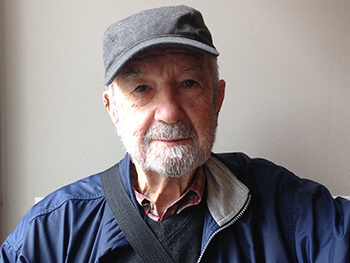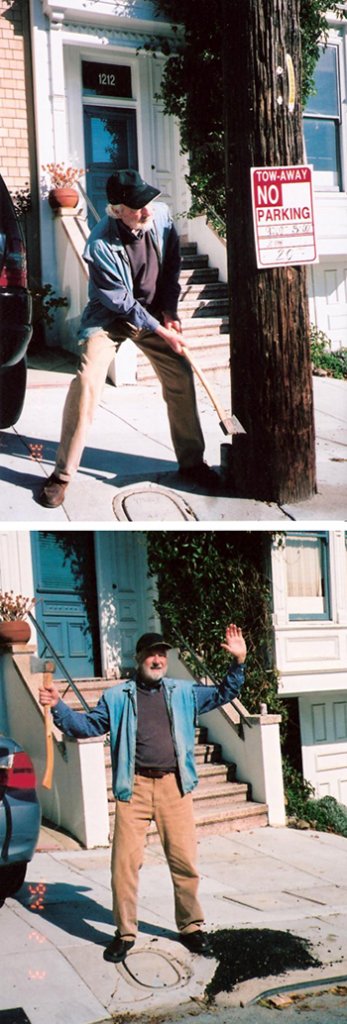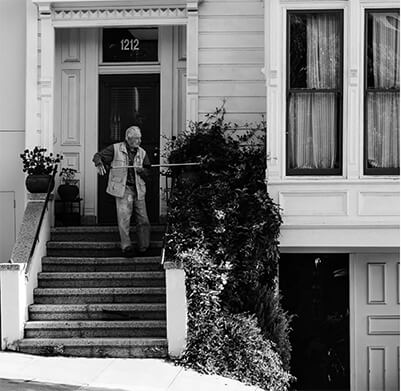
John H. Anderson
March 22, 1930 – March 12, 2019
Little did John Hawkins Anderson know that when he left rural Arkansas in the mid-1950s he wouldn’t go back.
John came to the Golden State with his experience of the world — and people — newly expanded by U.S. Air Force service in southern Germany. Promised a summer gig in a Balboa Island restaurant that served steaks to vacationers and celebrities, John arrived in California to find the sand warm, the girls suntanned, and he could eat like a king. It suddenly made sense to finish his undergraduate degree on the Pacific Rim. He received his Bachelor of Arts from Long Beach State College, as California State University, Long Beach was called when it was barely five years old. In 1958, he proudly earned a Master of City Planning from the University of California, Berkeley.

As a Bay Area urban planner for some three decades, he worked in San Francisco City Hall under Mayors Shelley, Alioto, Moscone, and Feinstein in the 1960s and 1970s. In the early 1980s he directed the Emeryville Redevelopment Agency, succeeding Mark Buell, who had recruited him as deputy there and in Alioto’s office. His first colleagues included graphic artist William Reid, John’s friend for decades and, in his 90s, still a Potrero Hill denizen.
Anyone who was lucky enough to accompany John on long urban walks across the City received an education in its history and development. He could point to buildings, public squares, and the sidewalks under your feet to identify details he’d had a hand in planning or designing; like the pattern of pavement at Embarcadero Center that features in Coppola’s The Conversation practically as a character.
In 1969, he scraped together a down payment on an 1897 Potrero Hill Victorian that may have originated as a catalogue “kit” house. Newly divorced, John took a sledge hammer to interior walls and turned his home into a bachelor pad. For years the house sat under the grim asbestos shingling that covered its original façade. In the 1970s, John stripped the unfortunate cladding and meticulously researched the gingerbread patterns traceable underneath it, commissioning new redwood trim and scalloped shingles appropriate to the structure’s vintage.
He’s remembered by long-time neighbors and newcomers alike as handy with tools and generous with Santa Rosa plums and Eureka lemons, plucked from trees dating to the 1930s. Any number of young Hill renters used his sun-soaked backyard to plant their food and flowers.
John launched early street tree planting initiatives in the neighborhood, late in life revering those that matured and mourning many that had to be replaced, including his own. He is best remembered for spearheading a campaign to sink the utility distribution lines in several Hill blocks, a project that took nearly two decades to complete. UGD Number 331 was formalized in 1992; it was the last such effort to be approved under an agreement between the City and Pacific Gas and Electric Company to fund undergrounding projects. Neighbors will remember the 2008 celebration to “reclaim the sky” (Potrero View, June 2008) and liberate world-famous Bay views from a tangle of power lines.
He loved the sculptural aesthetic of the old piers rotting in Mission Bay. For John, urban progress sometimes took the form of unmitigated decay alongside new construction and careful preservation of the built environment. John had a creative mind and artistic eye that enabled him to see in cast-off objects — like driftwood, rusted metal scraps, Styrofoam packaging or architectural salvage — new and beautiful forms. He fashioned candle sticks from plumbing parts and built an elegant outdoor tower from wire and scrap wood. He amassed a collection of interesting beach stones and other rocks he piled into berms in his garden. He was a skilled cabinet maker who custom-built shelving and other furniture for his house and others’, as a gift or favor.
John passed away on March 12, 2019, 10 days before his 89th birthday. He was at peace and well cared for by his children and the hospice staff in the VA of San Francisco’s Community Living Center at Ft. Miley, on the western edge of the City whose stunning beauty and variety impressed him anew for 65 years. Friends and neighbors visited him regularly at that splendid location.
John was happiest when he could sit by the water, whether the Bay at sunrise, Pescadero at low tide, Limantour Beach at Point Reyes in the fog of summer, or Rodeo Beach on Fourth of July. Fittingly, he lived his last months near the Pacific Ocean, whose sirens had called him decades earlier from across the country.

John was a great patron of neighborhood businesses and service people. He championed many charities with contributions large and small. Those who wish to make a donation in his name are invited to give to the Potrero Hill Archives Project (EIN # 45-5395748).


